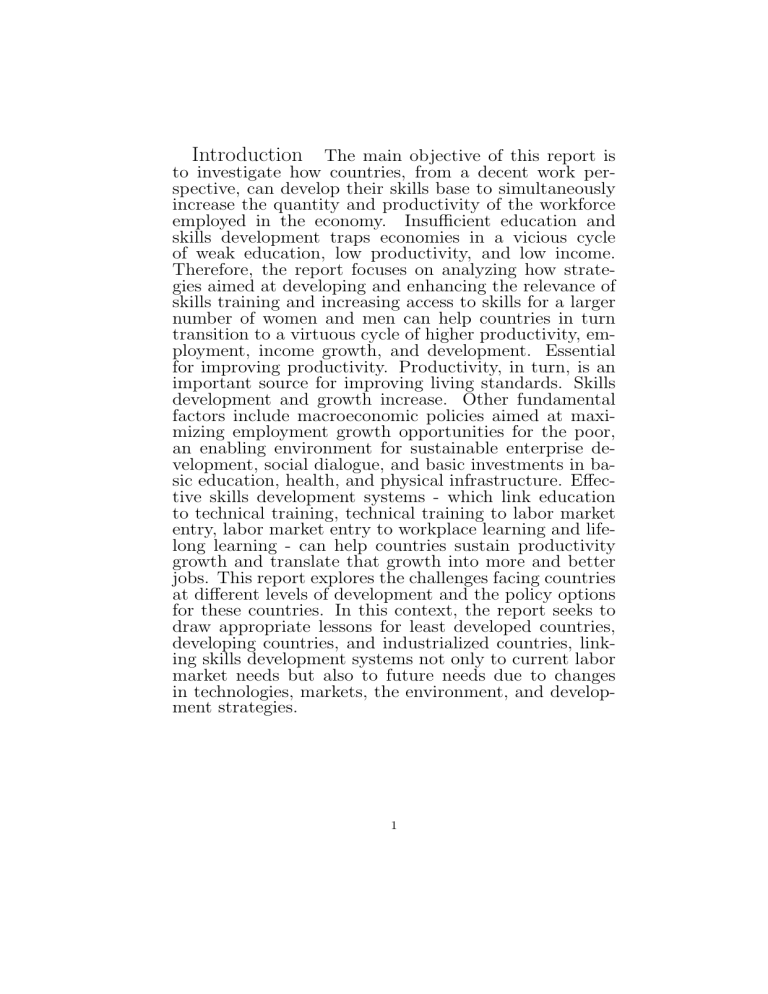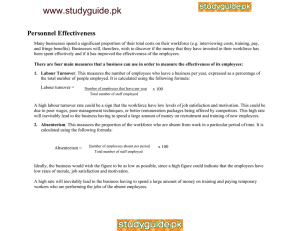
Introduction The main objective of this report is to investigate how countries, from a decent work perspective, can develop their skills base to simultaneously increase the quantity and productivity of the workforce employed in the economy. Insufficient education and skills development traps economies in a vicious cycle of weak education, low productivity, and low income. Therefore, the report focuses on analyzing how strategies aimed at developing and enhancing the relevance of skills training and increasing access to skills for a larger number of women and men can help countries in turn transition to a virtuous cycle of higher productivity, employment, income growth, and development. Essential for improving productivity. Productivity, in turn, is an important source for improving living standards. Skills development and growth increase. Other fundamental factors include macroeconomic policies aimed at maximizing employment growth opportunities for the poor, an enabling environment for sustainable enterprise development, social dialogue, and basic investments in basic education, health, and physical infrastructure. Effective skills development systems - which link education to technical training, technical training to labor market entry, labor market entry to workplace learning and lifelong learning - can help countries sustain productivity growth and translate that growth into more and better jobs. This report explores the challenges facing countries at different levels of development and the policy options for these countries. In this context, the report seeks to draw appropriate lessons for least developed countries, developing countries, and industrialized countries, linking skills development systems not only to current labor market needs but also to future needs due to changes in technologies, markets, the environment, and development strategies. 1 Skills for improving productivity and workforce growth and development 1 Understanding Productivity into account the differences in the price of a uniform group of goods. 1-Productivity is based on a relationship between outputs and factors of production. It occurs when a rise in output occurs associated with with a disproportionately higher factor of production, or when the same output is produced by fewer factors of production” (International Labour Office, 2005 a, page 5). Productivity can also be approached from a critical perspective. If the price charged for an outcome increases Without an increase in factor cost, this is also considered an increase in productivity (e.g. due to an increase in prices). universal for agricultural commodities or metals). 3-Productivity can be measured either on the basis of the combined factors of production (total factor productivity) or on,The basis of workers’ productivity, which is the output per unit of workers’ production, is measured either by the number of people employed (either in this report) or by number of hours worked (International Labour Office, 2005 b). To examine productivity levels in different countries,Meaningfully, convert raw GDP figures per worker in US dollars into scalable data. For comparison on the basis of purchasing power parity, take 2 2 3


